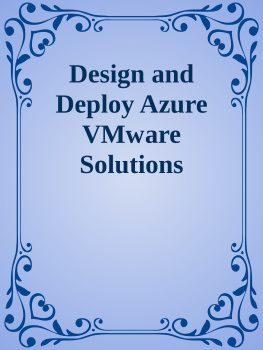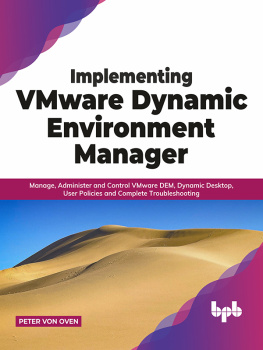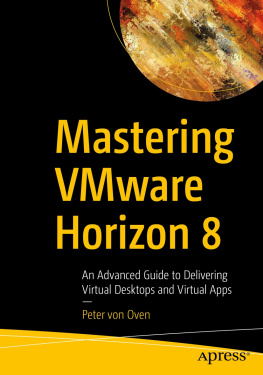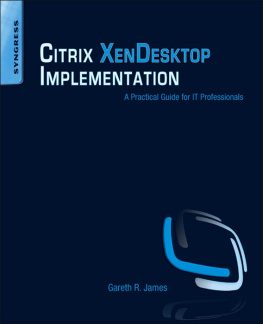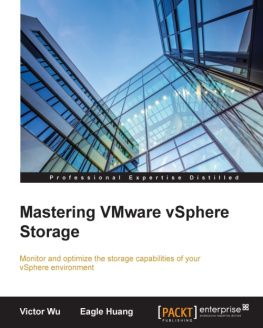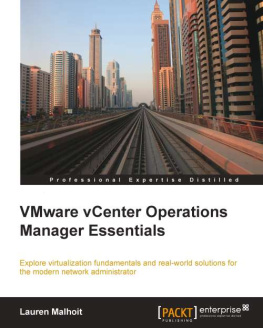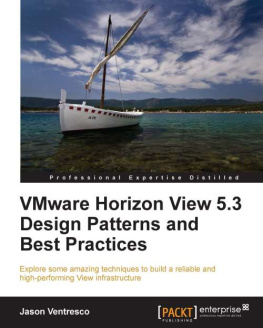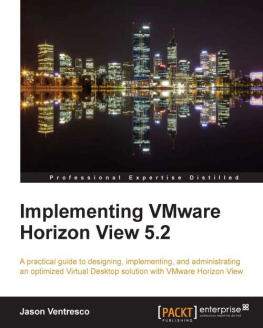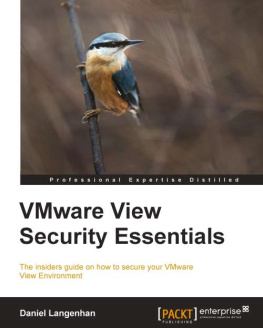Jason Langone - VMware View 5 Desktop Virtualization Solutions
Here you can read online Jason Langone - VMware View 5 Desktop Virtualization Solutions full text of the book (entire story) in english for free. Download pdf and epub, get meaning, cover and reviews about this ebook. year: 2012, publisher: Packt Publishing, genre: Computer. Description of the work, (preface) as well as reviews are available. Best literature library LitArk.com created for fans of good reading and offers a wide selection of genres:
Romance novel
Science fiction
Adventure
Detective
Science
History
Home and family
Prose
Art
Politics
Computer
Non-fiction
Religion
Business
Children
Humor
Choose a favorite category and find really read worthwhile books. Enjoy immersion in the world of imagination, feel the emotions of the characters or learn something new for yourself, make an fascinating discovery.
- Book:VMware View 5 Desktop Virtualization Solutions
- Author:
- Publisher:Packt Publishing
- Genre:
- Year:2012
- Rating:5 / 5
- Favourites:Add to favourites
- Your mark:
VMware View 5 Desktop Virtualization Solutions: summary, description and annotation
We offer to read an annotation, description, summary or preface (depends on what the author of the book "VMware View 5 Desktop Virtualization Solutions" wrote himself). If you haven't found the necessary information about the book — write in the comments, we will try to find it.
A complete guide to planning and designing solutions based on VMware View 5
- Written by VMware experts Jason Langone and Andre Leibovici, this book is a complete guide to planning and designing a solution based on VMware View 5.
- Secure your Visual Desktop Infrastructure (VDI) by having firewalls, antivirus, virtual enclaves, USB redirection and filtering and smart card authentication.
- Analyze the strategies and techniques used to migrate a user population from a physical desktop environment to a virtual desktop solution.
- A learn-by-example based approach that focuses on key concepts to provide the foundation to solve real world problems
In Detail
VMware View is a desktop virtualization solution that helps organizations automate desktop and application management, reduce costs, and increase data security through centralization of the desktop environment.
Written by VMware experts Jason Langone and Andre Leibovici, this book is meant as a guide for architects, solution providers, consultants, engineers and anyone planning to design and implement a solution based on VMware View 5. This book will pull information and expertise from real world scenarios so as to maximize practical learning. It will explain the settings and configurations needed to have a successful desktop virtualization solution as well as the why behind the decisions
This book is not meant to replace the official Administration or Installation Guides for VMware View or ThinApp published by the great people at VMware. The material in this book should be used during the design phase, which is before an implementation is underway. All components of a VMware View solution will be covered.
This book uses case studies from the real world including:
- Hotel Kiosk: VDI solution used in a hotel lobby to provide basic connectivity to its guests
- Federal agency with classified and unclassified information: VDI used to allow analysts to securely connect to both a classified and unclassified network from the same device
- Remote Office: VDI used to provide connectivity to offshore developers
- Out-of-band Scientist: VDI used to provide a secure desktop environment to scientists fighting disease in remote locales
What you will learn from this book
- Analyse the strategies and techniques used to migrate a user population from a physical desktop environment to a virtual desktop solution
- Decide whether to use persistent or non-persistent vDesktops, which impacts many areas of the overall VDI including storage, desktop pools and management
- Understand how end devices such as thick client, thin client, zero clients and other devices, such as the Apple iPad, are supported by VMware View
- Correctly size the VDI and avoid slow logons, poor PCoIP performance, authentication errors, random failures, and more
- Analyse all of the potential points of failure within a VDI and provide redundancy for each component
- Effectively plan the storage design for your VDI
- Ensure regular backups are taken to ensure a quick recovery in times of failure
- Understand various VDI design considerations for disaster recovery
Approach
This book will pull information and expertise from real world scenarios so as to maximize practical learning. It will explain the settings and configurations needed to have a successful desktop virtualization solution as well as the why behind the decisions.
Who this book is written for
This book is meant as a guide for architects, solution providers, consultants, engineers and anyone planning to design and implement a solution based on VMware View 5.
Jason Langone: author's other books
Who wrote VMware View 5 Desktop Virtualization Solutions? Find out the surname, the name of the author of the book and a list of all author's works by series.



